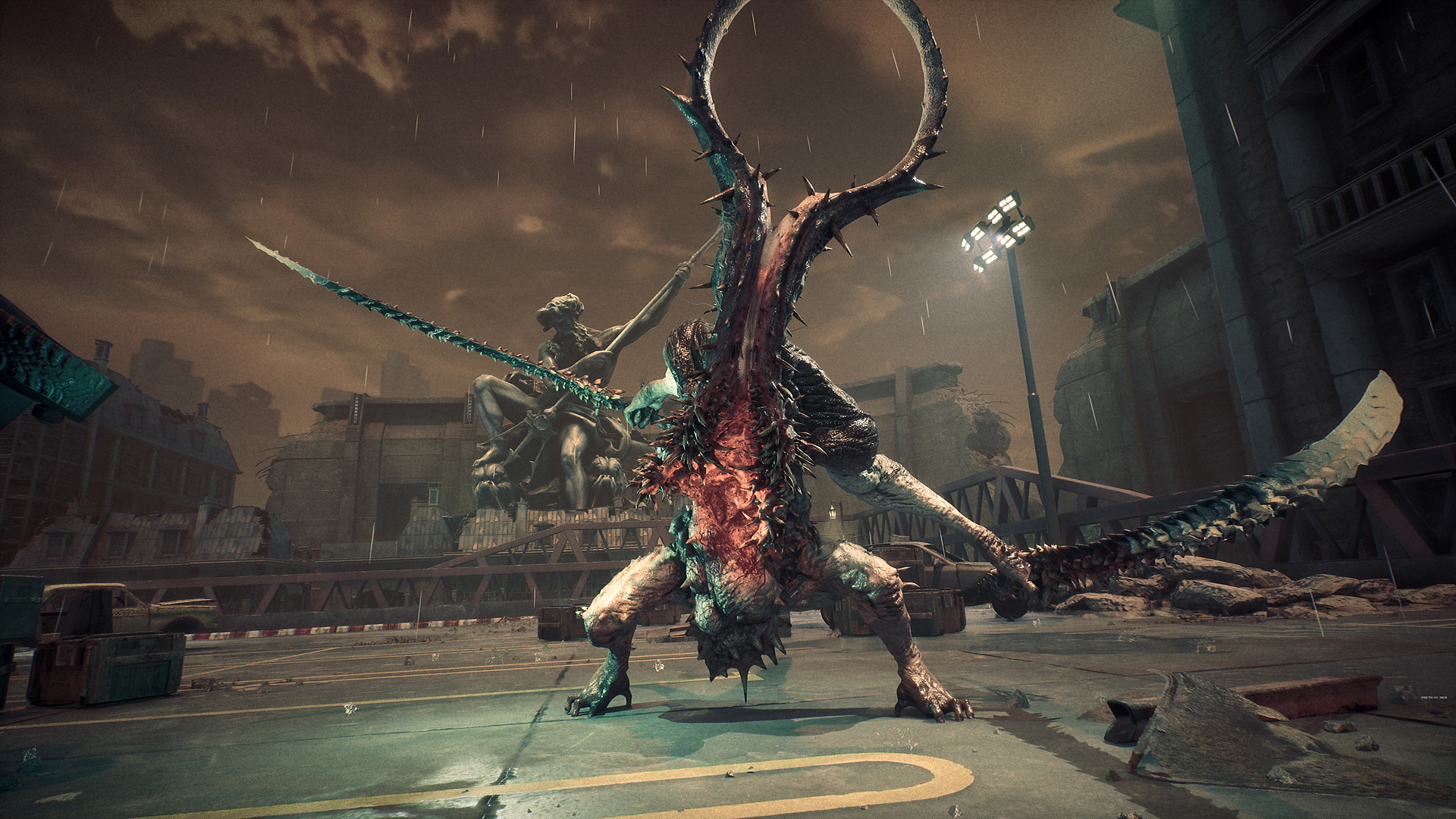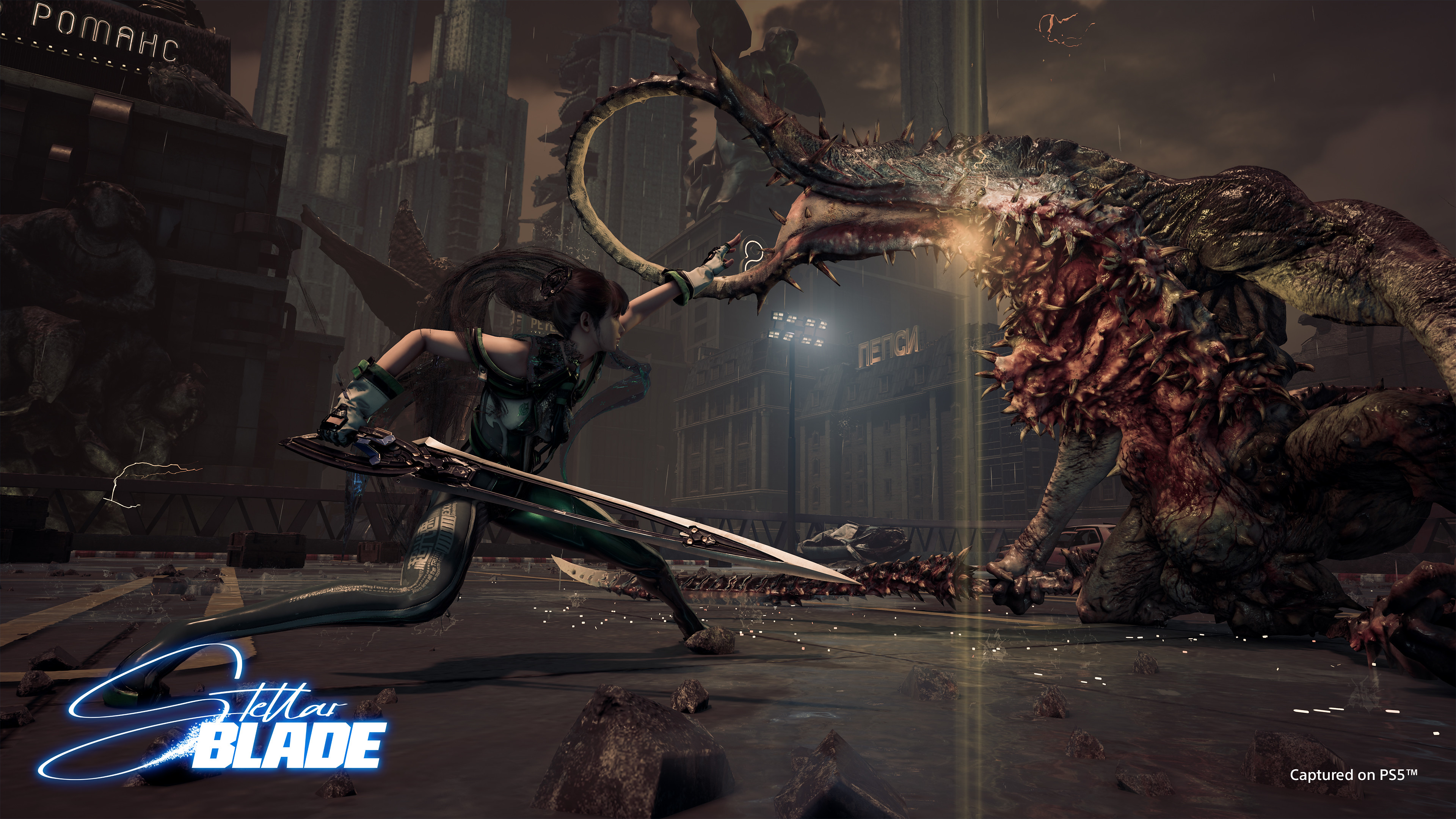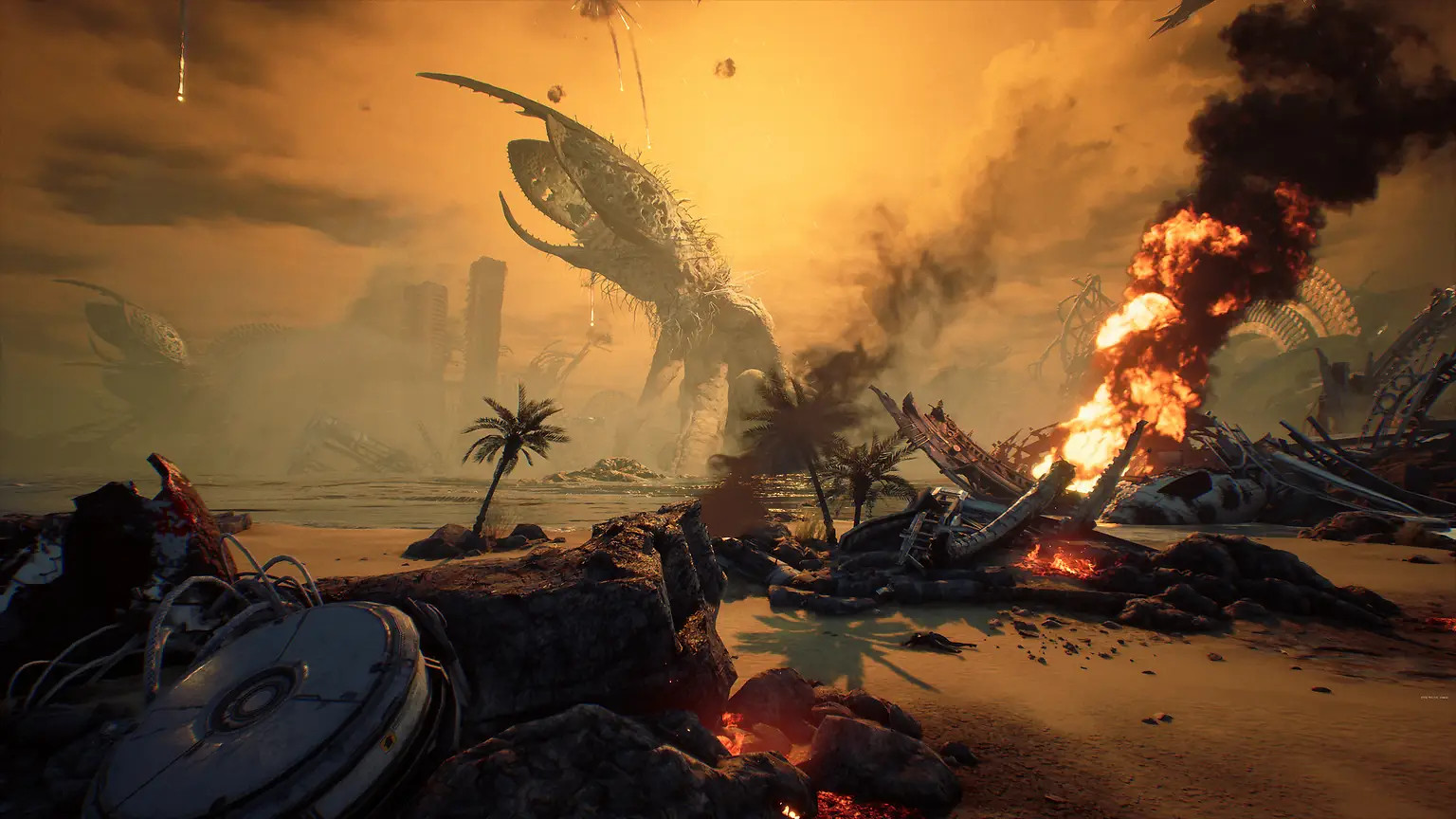Products You May Like
Mixing style, action, and fearsome monsters is a familiar formula for success in action games. However, with its first PlayStation title, Stellar Blade, developer Shift Up is adding a lot of unique flair to the equation. A large point of this distinction comes from its creature design, which quickly became a focal element of the upcoming action-adventure experience.
Stellar Blade incorporates many assets in the creation of its race of behemoths called the Naytiba. These resources include real-life animal research, 3D clay models, and the assistance of famous Korean movie monster designer, Hee-Cheol Jang, who originally came on board as consultant, but ultimately became more involved on the actual design and production of the Naytiba.
We sat down with the studio and monster designer to find out what makes the Naytiba unique, delving into many of their variations, such as the Raven, Stalker, and Gigas to understand the process behind creating a new face of horror in gaming.

The birth of the Naytiba
PlayStation Blog: Hee-Cheol Jang, how did you get involved with Shift Up and Stellar Blade? Was it your creature designs from The Host and Okja that got the conversation moving?
Jang: I remember visiting the studio one day after being contacted by Mr. Kim [Kim Hyung Tae, Stellar Blade director] and being surprised to see a workshop full of models and drawings. I think he made the offer after seeing my experience in creating clay models – scannable maquettes – for communication and 3D scanning during the design process of [movies] ‘The Host’ and ‘Okja’. At the time, the film industry was moving towards digital models using ZBrush for efficiency reasons, so I was shocked by the idea of using traditional modeling/3D scanning for creature creation for a new console game project.
How did Shift Up decide on what kind of enemy types Eve would face?
Director, Hyung Tae Kim: What Eve encounters is an unknown entity powerful enough to destroy humanity. We deliberately tried to design them to be eerie and unnerving, with missing eyes and faces stuck in the wrong places, which ties in with the content of the game.
The Naytiba have a terrifying, cosmic horror feeling to them. Why choose that direction instead of a more grounded approach?
Kim: Since these creatures never existed, they didn’t need to be realistic. We actually wanted them to look like different species or race. However, if you look closely, there are a number of designs that seem to be related to existing life on Earth, and I think you’ll see why when you play the game.
Hee-Cheol Jang, was your process for creature design different for a game, vs a film? For example, in a game players have to interact with your creature in a variety of ways, so does that mean you have to consider additional complexities when designing?
Jang: In most games, creatures are often targets for real-time combat, so it’s important to be able to match the sum of their motions and design. Other than that, there are some cosmetic differences between live-action and non-photorealistic mediums, but they seem to be converging in recent years.
Were there any designs that worked great on paper, or perhaps may have even worked in film, but for whatever reason didn’t translate to gameplay?
Jang: In a film, you can experience and understand the creatures over the course of the runtime. In games, we’re often forced to interact with a large number of creatures repeatedly in a relatively short amount of time, which is not always well thought out. For example, I personally have a habit of throwing in before/after twist gimmicks, which are often unnecessarily complicated or prolonged, making them inappropriate for resource creation or play.
Are there any personal fears that the team tapped into when bringing the Naytiba to life?
Kim: I think for me, it’s the human element. Something that’s human but different, that’s more terrifying than just an ugly lump.
Clay-made creatures
What positives come from sculpting the Naytiba designs out of clay before bringing them into the digital world?
Concept Art Lead, ChangMin Lee: Ease of communication for multi-team coordination – and gravity. In the digital world, you can’t really feel gravity, but if you are working with a physical sculpture you will be affected by it because the weight of the clay is real. This is important in determining the shapes and proportions of the creatures.
For example, if you make a head that is too big for the body it can actually cause the clay to crack or fall off. I think having these limits in place helps me design creatures that feel more realistic and grounded.
How long does it typically take to settle on a design? Can you go into detail about the review and refinement process?
Lee: Rough designs can be finalized in as little as a week or two. After that, it takes about two to three months to mold, and during those two to three months there are numerous reviews and revisions. During the discussion process with the other teams, specific body proportions, length attack methods, and necessary elements of other attack and defense are discussed and agreed upon. Also, revisions according to the direction (received from Mr. Kim) are made by seeing and touching the actual sculpt.
Despite their fictional origins, do you consider the muscle and skeleton composition, as well as skin texture of each Naytiba during this stage of its creation?
Lee: Absolutely. The muscles and skeleton in particular are based on real-life creatures. Skin textures are also heavily referenced. For example, the skin textures of reptiles, insects, crustaceans, mollusks, and so on, are mostly referenced. In the case of Gigas, the muscular and skeletal characteristics of gorillas are heavily referenced. The big shapes and concepts are fictional creatures, but without real-life references, they’re merely fiction.
Does the proposed movement of the Naytiba come into discussion and inform the clay model process, or is that fine-tuned once the mode is scanned into the game?
Lee: Things are discussed and adjustments are made in both ways mentioned. During the clay model process, all the teams, especially the animation team, get together and discuss. We talk about things like: “Do this design and these proportions make movements possible?” “How do we make the attacks look cool?”
After scanning, I usually talk a lot with the 3D model team. We discuss practical and efficiency issues, such as which details to keep, and whether there are any unnecessary designs when creating the 3D model. Throughout this process, we make detailed design adjustments and finalize the final product.
How much clay have you used in total to create Stellar Blade’s Naytiba?
Lee: Let’s see.. I didn’t keep count, but probably around 100kg? I think we used a lot. Usually, one portion of clay weighs around 900g and I think I used over one hundred of them.
Designing the bosses
Can you describe the three currently revealed bosses: Gigas, Raven, and Stalker, and any unique attributes that will stand out when Eve faces them?
Lee: Gigas and Stalker are creatures that are in some ways like brothers. They both have unique shapes of moving saw blades, and I wanted Eve to feel scared and threatened by them. Raven, as the name suggests, has large wings and bird-like characteristics. We chose black as the concept color to represent darkness and fear.
How do you find inspiration for attacks specific to the boss monsters?
Lee: In the rough concept stage, we first ask, “What part of the body/what weapon will it use to attack?” and work out the specifics as we go along. During that process, we gain inspiration and continue until the end.
Are there any stories unique to the design of these three boss monsters?
Lee: When we were working on the initial concept for Giga and Stalker, we had fun calling them the fan and dryer brothers. Some of the boss monsters we called “openers,” but you’ll have to find out for yourself which ones those are, and what we mean by that.
Are there any special details you’d like to share with players that they miss when encountering these creatures?
Lee: If you look closely at some, but not all, of the monsters, you’ll see baroque symbols and statuesque faces. You may not be able to see them at times because the combat is so fast and dynamic, but keep your eyes peeled!
You can get a closer look at Gigas, Raven, Stalker, and the rest of the Naytiba’s designs as you face them in Stellar Blade when it releases on April 26 for PlayStation 5.




